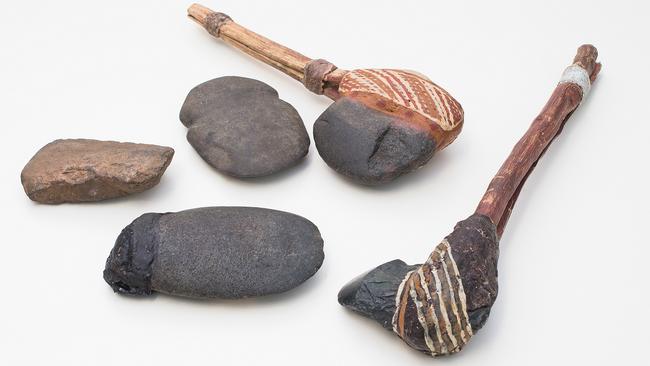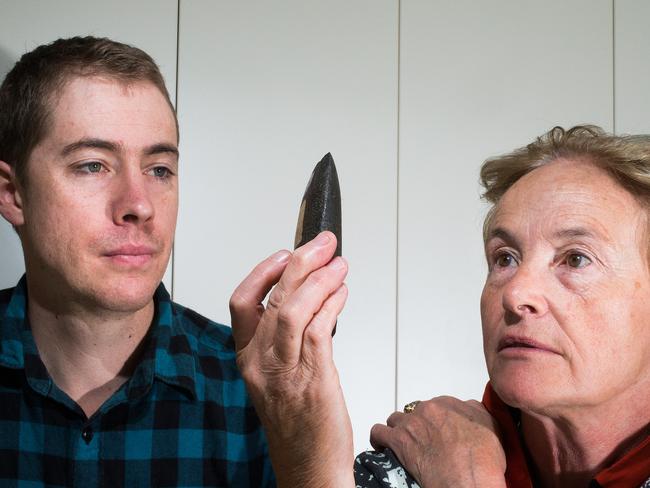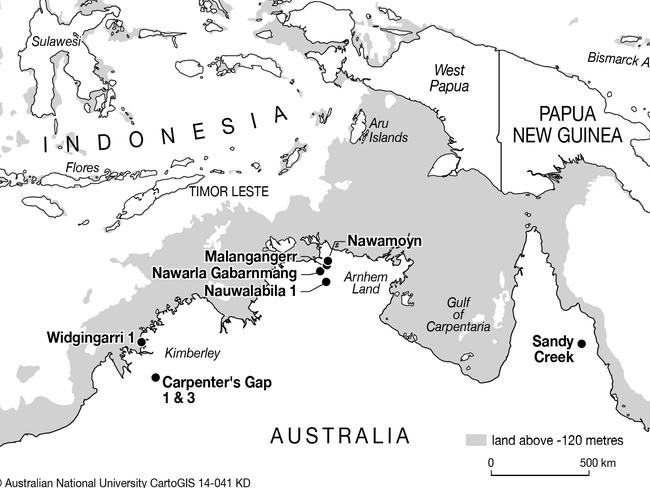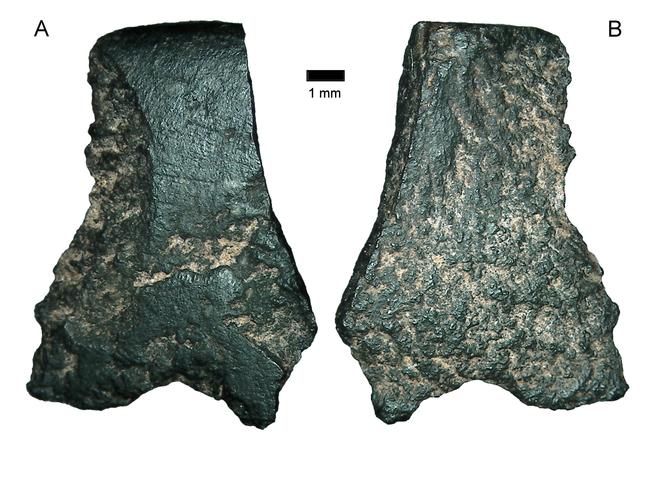Stone shard found in a WA grotto revealed to be world’s oldest known axe
IN a major archaeological breakthrough, the world’s oldest battle-axe has been found in Australia. (No mother-in-law jokes, please.)

THE world’s oldest battle-axe has been found in Australia. And we’re not talking mother-in-laws: It’s the first known blade that had a power-boosting handle attached.
The journal Australian Archaeology has published a study produced by researchers from several universities identifying a broken basalt shard as a remnant of a 44,000-49,000 year-old axe.
Lead author Professor Peter Hiscock of the University of Sydney said the axe must have been a local innovation among some of Australia’s earliest Aboriginal settlers.
“Since there are no known axes in Southeast Asia during the Ice Age, this discovery shows us that when humans arrived in Australia they began to experiment with new technologies, inventing ways to exploit the resources they encountered in the New Australian landscape,” he said in a media statement.
While handheld cutting stones could have been in use up to 700,000 years ago, shaping one into an axe head capable of being attached to a handle represents a significant leap in human intelligence.

Such an axe was highly efficient for cutting wood, and as a weapon of war.
So when were axes invented?
“This question has been pursued for decades, since archaeologists discovered that in Australia axes were older than in many other places. Now we have a discovery that appears to answer the question,” Professor Hiscock says.
The polished basalt shard was found in the early 1990s by Professor Sue O’Connor of the Australian National University, during excavations of an ancient rock shelter in West Australia’s Kimberley known as Carpenter’s Gap. It’s one of the first Australian sites known to have been inhabited by modern humans.
ANU archaeologists have unearthed fragments from of the world's oldest-known axe in WA.https://t.co/cG764EsfM0 pic.twitter.com/n4TzvEAUrZ
— ANU Media (@ANUmedia) May 10, 2016
The fragment, found at the deepest levels of the excavation, would not be closely studied until 2014.
“Nowhere else in the world do you get axes at this date,” Professor O’Connor says. “In Japan such axes appear about 35,000 years ago. But in most countries in the world they arrive with agriculture after 10,000 years ago.”
Grinding and polishing a piece of basalt into a sharp head with a base capable of supporting a handle would have involved several days of effort. It would have become a highly precious — and long used — asset.

The fragment itself appears to have flaked off the axe’s blade as it was being resharpened. The axe itself would have remained in use, explaining why the remainder hasn’t been found.
While humans went on to spread across Australia, the knowledge of axe technology didn’t follow them.
“Axes were only made in the tropical north, perhaps suggesting two different colonising groups or that the technology was abandoned as people spread into desert and subtropical woodlands,” Professor Hiscock says.
“Australian stone artefacts have often been characterised as being simple. But clearly that’s not the case when you have these hafted axes earlier in Australia than anywhere else in the world,” Professor O’Connor says.





